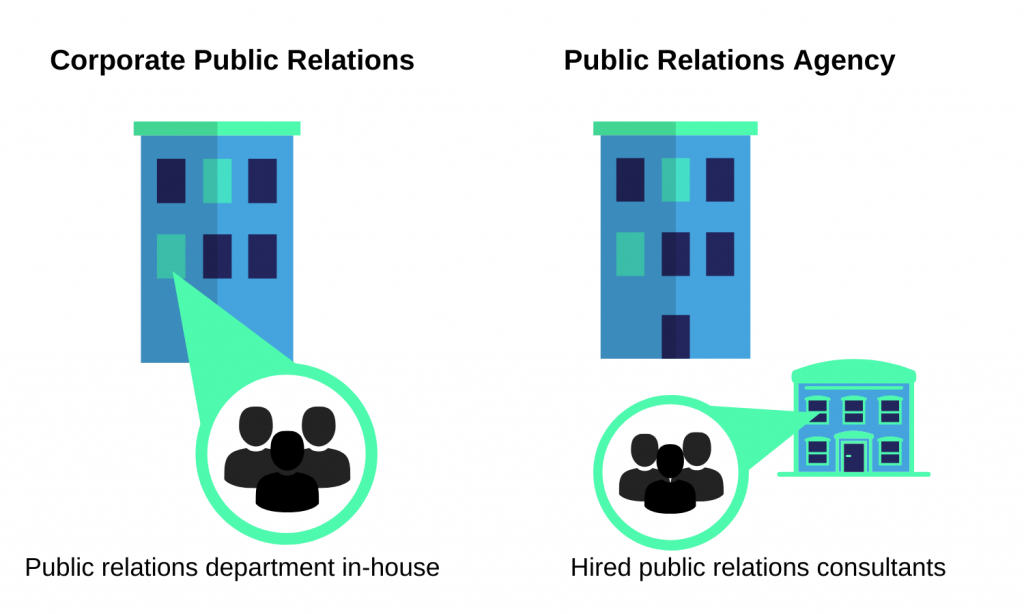4 Corporate Public Relations
Public relations is a complex field made up of many disciplines (or subfunctions). However, we can identify four major types or locales within the profession:
- corporate public relations
- public relations agency/firm
- government relations and public affairs
- nonprofit public relations
Corporate public relations is located “in house” of an organization. Many organizations have an in-house public relations/communications department responsible for fostering relationships between an organization and its internal and external publics. In government, these departments are often called public affairs.
Corporate public relations department vary in size. The number of people working in the department depends on the size of the company and the value that the management sees in public relations. Companies that are dedicated to build strong brand awareness may have far more employees than those organizations that sell their products directly to businesses. For example, a fashion company usually place a greater attention to the public relations functions than a construction firm.
A head of a public relations/communications department is often called a chief communications officer (CCO), manager or director. The head of this department might serve as a vice president in a large company.

Figure 1.3 Corporate Public Relations vs.Public Relations Agency
Corporate public relations departments help companies communicate with their stakeholders. They also focus on maintaining a favorable reputation of the organization and its brands.
PR agencies maintain a favorable reputation of the organization and its brands. They are hired consultants that normally work on an hourly basis for specific campaigns or goals of the organization that hires them.
Government relations and public affairs are often referred to as being one and the same, but there are differences between the two. While government relations is more about business-to-government interactions about regulatory and internal issues, public affairs is more of an external process that also includes relationships with the media and stakeholders.
This term is used to describe an organization’s relationship with stakeholders. These are individuals or groups with an interest in the organization's affairs, such as politicians, civil servants, customers, clients, shareholders, trade associations, members of local communities, think tanks, business groups, charities, unions and the media.
Not-for-profit organizations do not earn profits for its owners. All of the money donated to or earned by a not-for-profit organization is used in pursuing its goals and keeping it running.
Any group(s) of people held together by a common interest. They differ from audiences in that they often self-organize and do not have to attune to messages; publics differ from stakeholders in that they do not necessarily have a financial stake tying them to specific goals or consequences of the organization. Targeted audiences, on the other hand, are publics who receive a specifically targeted message that is tailored to their interests.
Public relations activities, such as the management of corporate events, press conferences, product launches, large employee gatherings, and leadership meetings are managed by the chief communications officer (CCO), as well as preparing executives for major media appearances, key industry speeches, employee meetings, testifying before government entities, and participating in community events.

